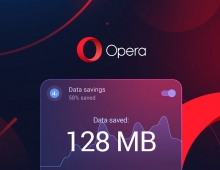
Windows 8 Requirements For Smartphone Displays Limit Its Wide Expansion
The display requirements Microsoft has set for the Windows 8 smarphones are more complicated that those of Android OS, something that does not help Microsoft enlarge its market share.
Android is now the most commonly used OS in smartphones, followed by Apple iOS and Windows Phone. The iOS display requirements of very simple, because Apple controls the few models that use it. Windows Phone 8 requirements are more detailed than Android, as Microsoft views the phone closer to a mobile PC, defining the details of key components. However, Android is open, and defines a range with few limits. Differences in display resolution requirements in Android and Windows Phone 8 can be seen by the following:
Android OS Requirements for smartphone display:
- Resolution: display must be over 100 ppi; it can support FHD resolution or even higher, limited by what the components can achieve.
- Aspect Ratio: between 4:3 (1.333) and 16:9 (1.779)
- Display Size: no requirements.
Windows Phone 8 requirements for smartphone display:
- VGA (640?480), 4:3, 3 to 4.3"
- WVGA (800?480), 15:9, 3.5 to 5"
- WXGA (1280?768), 15:9, 3.5 to 7"
- 720P (1280?720), 16:9, 3.5 to 7"
This means that if a brand wants to launch a high-end flagship model with FHD (1920x1080) resolution, Android OS is the only choice. However, the wide range of definition for smartphone displays will increase the complexity of application development, raising the cost if a developer wants to address all Android smartphone models. Thus, most developers will choose the resolution of top-selling models, such as the Samsung Galaxy S3, HTC one X, or Sony Xperia series; using blend or vignette background color is another solution for Android devices.
Multiple brands announced new flagship smartphones with FHD resolution at CES, all of which run Android. A few brands quietly showcased new models running Windows Phone 8, but the highest resolution of WP8 smartphones is HD (1280x720).
"The backgrounds and concepts of Android and Windows are different, which cause different requirements for smartphone displays," explains Shawn Lee, a senior analyst for DisplaySearch. "Android is a leader in the smartphone OS and application markets, so application developers must address it. At the same time, Android?s Linux background means that it does not have many limits in smartphone display requirements. Windows Phone 8 is the challenger, and it comes from a PC background, in which detailed definitions are created for developers. While Windows Phone 8 developers can't chase the high resolution trend, the detailed resolution requirements can be helpful for application developers."
Another key element for Microsoft to enlarge its market share in 2013 will be to increase available application software for Windows Phone.
Android OS Requirements for smartphone display:
- Resolution: display must be over 100 ppi; it can support FHD resolution or even higher, limited by what the components can achieve.
- Aspect Ratio: between 4:3 (1.333) and 16:9 (1.779)
- Display Size: no requirements.
Windows Phone 8 requirements for smartphone display:
- VGA (640?480), 4:3, 3 to 4.3"
- WVGA (800?480), 15:9, 3.5 to 5"
- WXGA (1280?768), 15:9, 3.5 to 7"
- 720P (1280?720), 16:9, 3.5 to 7"
This means that if a brand wants to launch a high-end flagship model with FHD (1920x1080) resolution, Android OS is the only choice. However, the wide range of definition for smartphone displays will increase the complexity of application development, raising the cost if a developer wants to address all Android smartphone models. Thus, most developers will choose the resolution of top-selling models, such as the Samsung Galaxy S3, HTC one X, or Sony Xperia series; using blend or vignette background color is another solution for Android devices.
Multiple brands announced new flagship smartphones with FHD resolution at CES, all of which run Android. A few brands quietly showcased new models running Windows Phone 8, but the highest resolution of WP8 smartphones is HD (1280x720).
"The backgrounds and concepts of Android and Windows are different, which cause different requirements for smartphone displays," explains Shawn Lee, a senior analyst for DisplaySearch. "Android is a leader in the smartphone OS and application markets, so application developers must address it. At the same time, Android?s Linux background means that it does not have many limits in smartphone display requirements. Windows Phone 8 is the challenger, and it comes from a PC background, in which detailed definitions are created for developers. While Windows Phone 8 developers can't chase the high resolution trend, the detailed resolution requirements can be helpful for application developers."
Another key element for Microsoft to enlarge its market share in 2013 will be to increase available application software for Windows Phone.




















